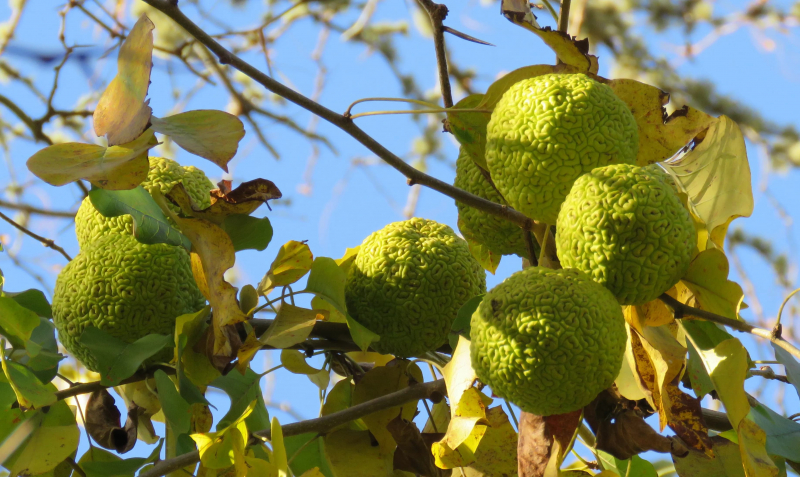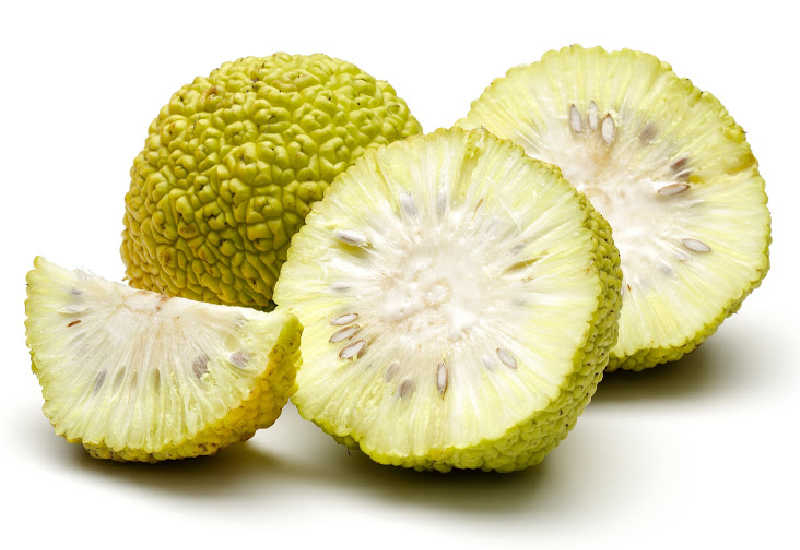Osage Orange
Osage oranges, botanically classified as Maclura pomifera, are uniquely textured fruits growing on small deciduous trees that are members of the Moraceae or Mulberry family. Also known as the Hedge apple, Bow-wood, Horse apple, and Monkey Ball, Osage oranges are considered to be a relict species that has been present since prehistoric times, once consumed by extinct giant sloths and mastodons. Due to shifting, developing civilizations, Osage orange consumption has peaked and waned throughout North American history. One of the most widely planted trees in the central United States, Osage oranges were once admired for their rapid growth and thorny branches, which made them ideal for use as natural fencing. Modern farming techniques have led to the majority of trees being felled, making them scarce and restricted to a few areas of North America.
Osage oranges are huge, globular fruits with protruding bumps that give them a slightly uneven appearance. They range in size from 8 to 15 centimeters in diameter. The surface is severely ridged, rough, and yellow-green, and it has a few stray, wiry hairs on it. Although the flesh of an Osage orange is practically inedible, the seeds are considered better eating. Once the fruit is sliced in half, there are roughly 200 to 300 light brown seeds on offer. After roasting, they have a slightly bitter but pleasant taste, a cross between popcorn and sunflower seeds.












